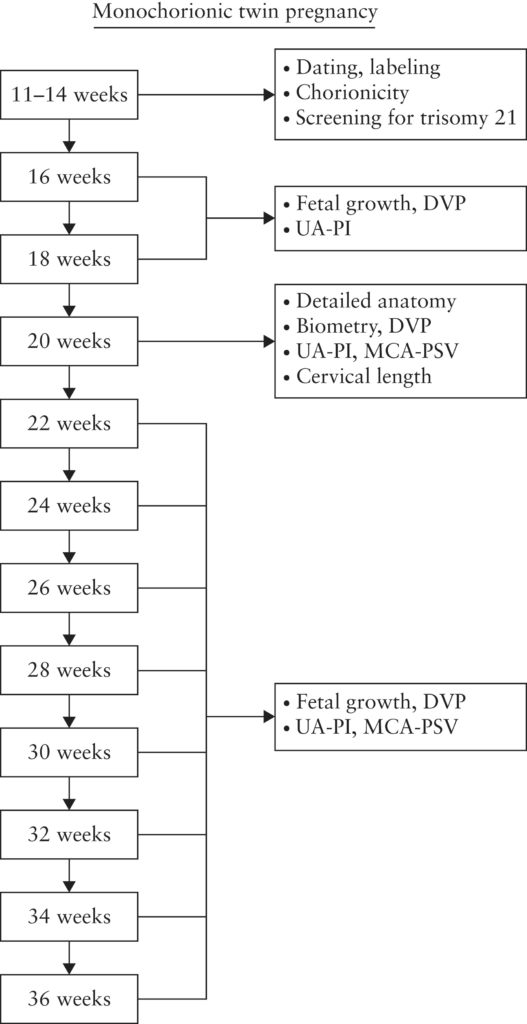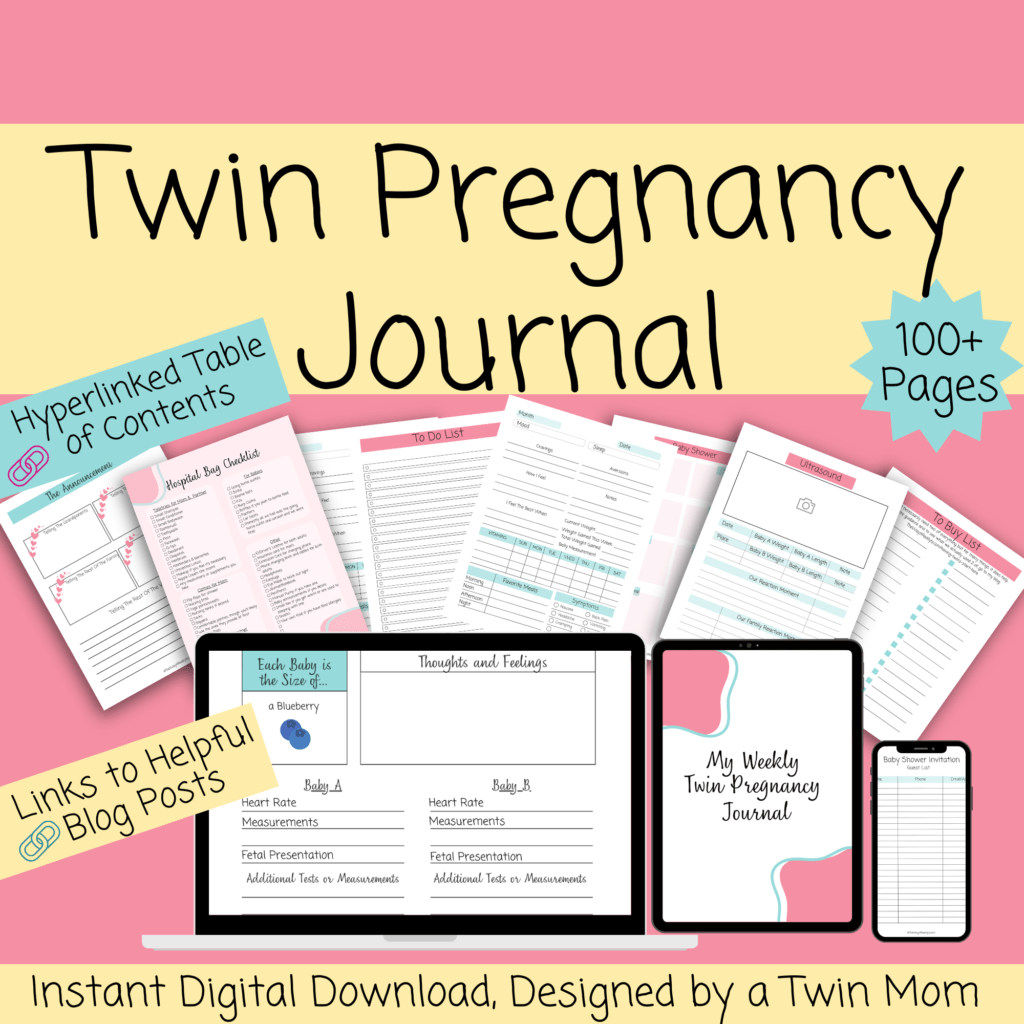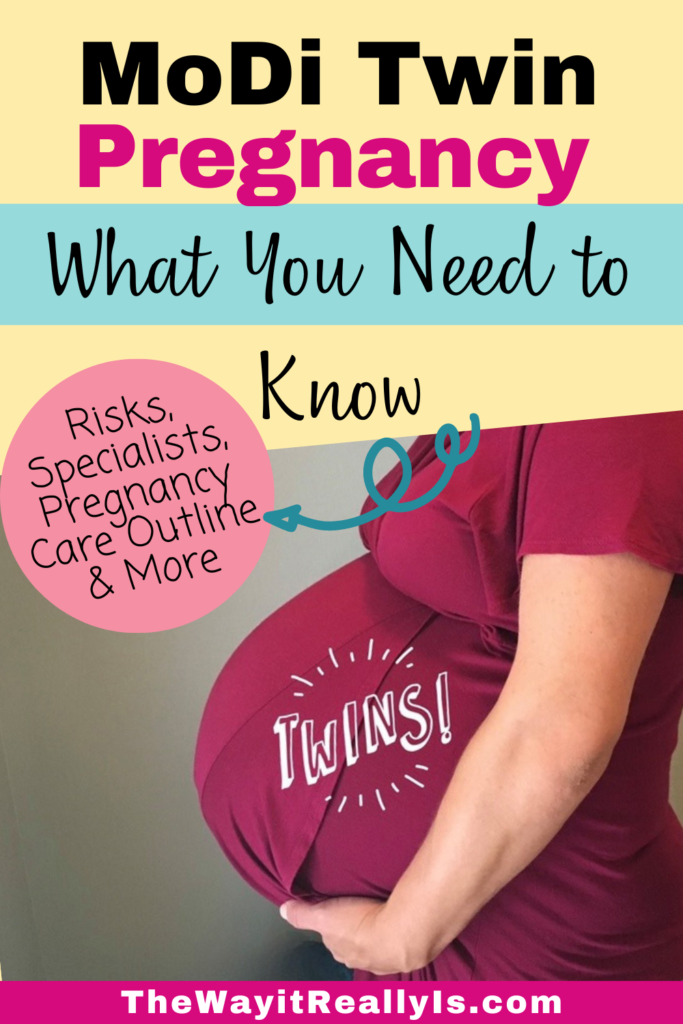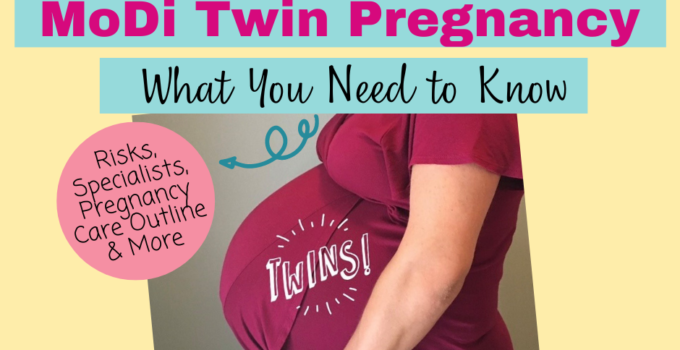There are many things you need to know during your MoDi Twin pregnancy that are beyond what you’d need to know for other types of twin pregnancies or a singleton pregnancy. Here is what I learned throughout my MoDi Twin pregnancy and beyond.
Disclaimer: The information provided on this blog is for general educational purposes only and is not intended as a substitute for professional medical advice, diagnosis, or treatment. Always seek the advice of your physician or other qualified healthcare provider with any questions you may have regarding a medical condition.
What Are MoDi Twins?
Monochorionic/diamniotic twins or MoDi Twins for short, are identical twins who share a single placenta, or chorion, in the womb but have their own amniotic sac, or amnions. This means they also have a shared blood supply and require close monitoring for serious complications such as unequal placental sharing. They are higher risk than DiDi twins who have separate placentas and own sac and less risky than MoMo twins who share a placenta and amniotic sac.
Due to MoDi twins sharing a placenta, the pregnancy is higher risk than some other types of twins and close monitoring which I will delve into further below.
MoDi Twins are identical, meaning they came from one egg and one sperm that formed a zygote and the zygote splits between days 4-8 after conception.
Specialists Required
Due to the significantly increased risk of life-threatening complications with MoDi twins, at 14 weeks I started seeing a Perinatal Physician, a specialist in high-risk pregnancy, in addition to my OBGYN. Luckily I had done my research to know that I had to ask for a referral when I saw my OB at 13 weeks. He hadn’t planned on referring me until 20 weeks and I don’t even want to think about what could have been missed between 14 weeks and 20 weeks had I not firmly requested that referral.
Luckily my OB knows me well, knows I do my research, and was agreeable to give me the referral. I thought they wouldn’t want to see me until 16 weeks but they requested to see me that next week at 14 weeks already. MoDi twins are so rare that I suppose it’s not uncommon for OBGYNs to not be up to speed on the ultrasound requirements and need for an early referral. Over the years I’ve learned that with everything, it’s always best to do your own research.
The Brigham and Woman’s hospital has a great resource regarding when and what to get checked for depending on the type of identical twins.
MoDi Twin Pregnancy Care Outline
Throughout the MoDi Twin pregnancy there is a lot more to monitor than with a single fetus pregnancy, fraternal twins or DiDi Twins.
The extra monitoring is due to MoDi Twins a shared placenta, which means there is a possibility they may not equally share resources from the shared placenta which could be fatal to one or both twins. MoDi twins have their own amniotic sac which makes them less high risk that MoMo twins which are the most high risk due to sharing a placenta and amniotic sac. With MoMo twins, they can get tangled up in each other’s umbilical cords, among other risks.
For the purposes of this blog post, I will be focusing on MoDi Twins since that’s what my twins are and what I have experience with.

Frequent Appointments
Starting at 14 weeks I’ll have ultrasounds every two weeks until I hit 30 weeks, then I’ll have them every week until I deliver, possibly more often if needed. I’ll also not be able to go past 37 weeks pregnant as the chances of complications rise significantly the longer they’re in there.
Checking for TTTS
Every two weeks the ultrasound will be looking to see if the babies have signs of developing Twin-to-Twin Transfusion Syndrome (TTTS) which happens in 15-20% of MoDi twin pregnancies. This is when one baby is getting more blood vessels than the other which can lead to one baby having too much blood flow and the other not enough.
If TTTS if not caught quickly and treated, often with laser surgery, it can lead to the death of one or both twins. Even with surgery, death or significant birth defects can still arise. The risk of this is highest from weeks 16-24, after which the risk of Twin Anemia-Polycythemia Sequence (TAPS) rises. TAPS is a form of TTTS that can occur later in pregnancy which is characterized by an imbalance in red blood cells and hemoglobin.
Growth Ultrasounds & ECG
I will also have ultrasounds that measure growth every 4 weeks to ensure they’re both growing at the same rate and like they’re supposed to. At week 18 and week 22 the twins will undergo fetal echocardiography (ECG) to ensure their hearts are developing properly. Twins are at an increased risk for heart defects. If no problems are detected at week 22 then I won’t have to have a third ECG but we’ll see.
The twins will also be monitored for Selective Intrauterine Growth Restriction (sIUGR) which is when there is an unequal placental share between the babies leading to abnormal blood flow. This can cause slowed or stopped growth for one baby. They’ll also be monitored for Twin Reversed Arterial Perfusion sequence (TRAP) which happens when the cardiac system of one twin fails to develop properly. This can lead to cardiac failure.
Other Possible Complications
Other complications include a higher risk of preeclampsia (which I ended up with), preterm labor, and gestational diabetes. I started taking a baby aspirin a day at the request of both of my physicians to hopefully decrease my risk of preeclampsia. This was scary since I’m allergic to aspirin’s cousin, ibuprofen, but was just fine taking it.
The risk of stillbirth is increasingly higher between 33-38 weeks which is why I won’t be able to go past 37 weeks, though in my mind I’d rather deliver earlier due to this risk but I know it’s best for them to be inside as long as they can as long as no complications arise. I also realize that I’ll need a repeat cesarean delivery (C-Section) like many twin births.
More detail of these complications that can arise are in this article from the Brigham and Women’s Hospital.
What I Was Most Concerned About During my MoDi Twin Pregnancy
Twin-to-Twin Transfusion Syndrome is what I was worried about the most while I was pregnant with my twins.
In the MoDi Twin pregnancy groups I was part of, this was something that was brought up all of the time, to the point that I was convinced I’d be one of the 10-15%. I soon realized that the reason it’s talked about so much is because people tend to go there to ask questions, not to share about the good things or how well their pregnancy is going. This is the truth with any group online, it would seem braggy to go in there and talk about how great a pregnancy is going and not something that people really think about doing. Most often, we post in groups to ask a question, which typically means there is a problem we need solving.
Once I spent less time in these groups, my anxiety lowered a great deal though I was still careful to always be listening to my body to detect if anything was going wrong. One of the things I kept close track of was my weight. Not because I didn’t want to gain any, I ended up gaining 65 pounds during my MoDi Twin pregnancy, I kept track day to day because I read that weight gain of over a pound in a day could indicate an issue such as TTTS.
There was one day that I noticed I had gained over a pound from the previous morning. I tried to stay calm, pretty sure it was nothing, but I freaked out inside. I called my perinatal physician’s office (specialist for high risk pregnancies) and scheduled an ultrasound for that day. Luckily a friend of mine was able to care for our 2 year old while my husband and I went to the ultrasound. Thankfully, all was fine. Apparently I had just had too much salt the previous day which caused me to retain more water than usual. I felt like an alarmist and an idiot BUT I’m still glad, over 5 years later, that I went in when I was concerned.
Pregnant with Twins? You’ll want the Twin Pregnancy Journal!
When I was pregnant with twins I was using a regular pregnancy journal but there was no place to keep track of all the extra appointments, all the measurements, ultrasounds, etc. Years later, I decided to make the twin pregnancy journal I wish I would have had when I was pregnant!!
The twin pregnancy journal has over 100 pages you can use digitally on a tablet or iPad or print it out and put it in a binder to hold even more info. It includes a page for every week, ultrasound pages you can duplicate if you need more, places to keep track of Baby A and Baby B’s measurements, weights, etc. each week, birth plan pages, and even the hospital bag checklist I created from when I had my twins!
Here it is below, click the button or image below to learn more and purchase. It’s much less expensive than the pre-printed ones, that’s for sure! I know you’ve got enough expenses right now, though this took me a lot of time to put together, I’m ultimately here to help.
NEW! I’ve included Digital and Printable versions! The digital version has a hyperlinked Table of Contents, links to helpful twin pregnancy blog posts for along your journey, and what to buy for twins!

Resources

Are MoDi Twins Identical?
Yes, MoDi Twins are identical.
Do I Need to See a Specialist for my MoDi Twin Pregnancy?
Yes, if you are pregnant with MoDi twins you should be seen by a Perinatal Physician or Maternal-Fetal Medicine specialist (MFM) by the time you are 16 weeks along in your MoDi Twin Pregnancy.
Do MoDi Twins Run in Families?
No, MoDi Twins are a completely random occurrence of when a zygote splits into two between 4-8 days after the egg was fertilized.
As a mom of identical twins and a son two years older, I have gained invaluable experience in the realm, and chaos, of parenting. With a Master's Degree and Education Specialist Degree in School Psychology, I spent years as a school psychologist, helping children navigate through their educational and emotional challenges. Now as a stay at home mom and professional blogger, I combine my areas of expertise to help you in your parenting journey.

